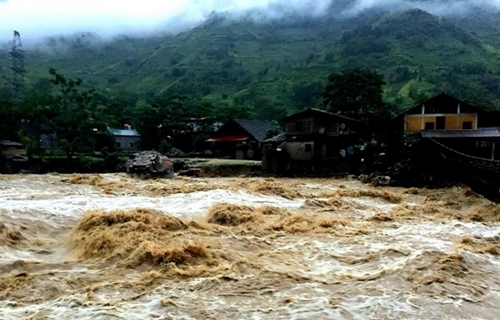Concerned agencies were told to conduct a comprehensive inspection of supplies, equipment and human resources to deal with natural disasters, as well as to carefully check the dyke systems in the region.
    |
 |
|
Flood from upstream badly affected people in Northern mountainous province last year. (Photo for illustration) |
To respond to torrential rains in mountainous and delta regions, the committee’s deputy head Tran Quang Hoai requested the National Center for Hydro-meteorological Forecasting to regularly provide weather updates with in-depth observations for the public.
The Irrigation General Department was asked to provide materials on natural disaster preparedness for the committee to execute natural disaster prevention work.
All fish-breeding cages have been moved out of the downstream of Hoa Binh Hydropower Reservoir and the Hoa Binh Hydropower Plant has set up plans for emergency discharge if necessary.
The Vietnam Disaster Management Authority (under the Ministry of Agriculture and Rural Development) was tasked with preparing appropriate means and equipment for access to areas affected by flash floods and landslide.
The committee will work with the Ministry of Health and local governments to set up evacuation plans.
The Ministry of Industry and Commerce was told to give safety warnings about mineral exploitation in areas at high risk of landslides and mine collapses.
Local administrations have to update the weather situation to the committee and the State Committee for Incidents and Disaster Response, and Search and Rescue.
Mai Van Khiem, director of the National Center for Hydrometeorological Forecasting, said from June 25 to July 1, the water levels in hydro-meteorological stations in China tended to change slowly as they were affected by upstream hydropower reservoirs.
There were no floods and the daily average rainfall was 10-30mm, he said.
Meanwhile, water levels in the Hong (Red) and Thai Binh rivers in Northern Vietnam remain low and changing slowly.
Source: VNA